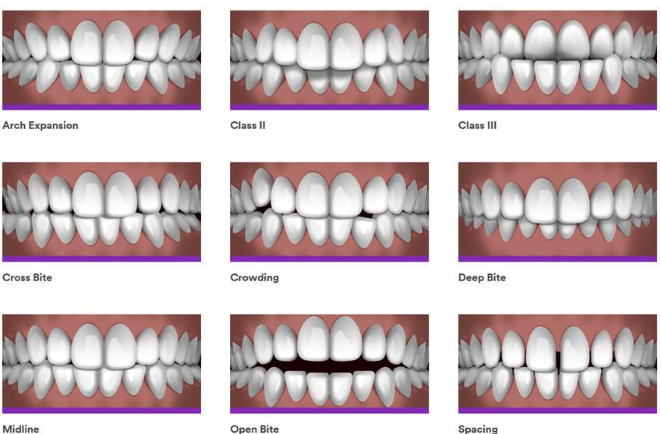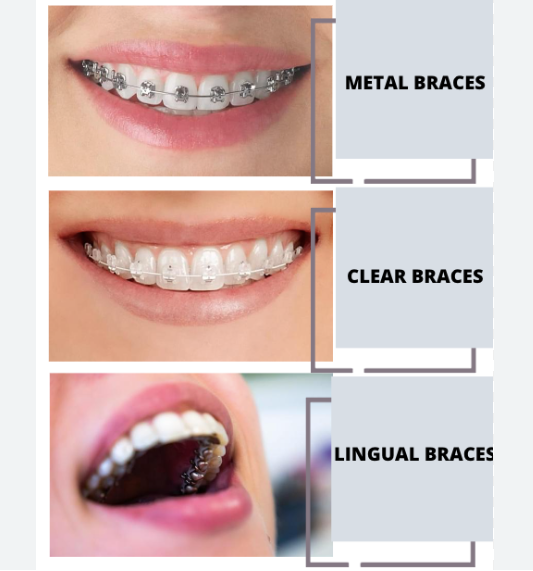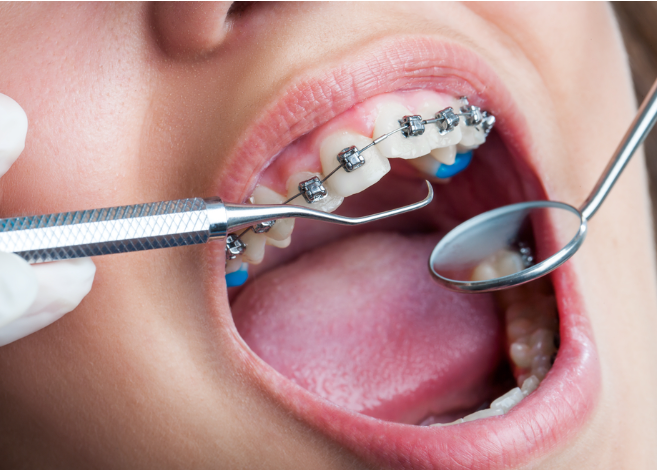
Orthodontics is often associated with improving the appearance of a smile, but its benefits go far beyond just aesthetics. While achieving a straight and beautiful smile is a key outcome, orthodontic treatments also address functional issues that can impact oral health and overall well-being. Many people seek orthodontic care to correct problems such as difficulty chewing, jaw pain, and misalignment of teeth, all of which can lead to more serious health concerns, including temporomandibular disorders, if left untreated.
What is Orthodontics?
Orthodontics is a specialized branch of dentistry focused on diagnosing, preventing, and treating dental and facial irregularities. This field involves the use of various appliances, such as braces, aligners, and retainers, to enhance the alignment and positioning of teeth and jaws. The primary goal of orthodontic treatment is to improve both the appearance and function of the teeth and jaws, ultimately contributing to better overall oral health.
Orthodontic treatment is beneficial for individuals of all ages, from children to adults. It can address a wide range of issues, including crooked teeth, overbites, underbites, and jaw misalignment. By correcting these problems, orthodontic treatment can also help alleviate symptoms of temporomandibular joint disorder (TMD), such as jaw pain and facial pain. Whether you’re dealing with minor alignment issues or more complex jaw problems, orthodontics offers solutions that go beyond just a beautiful smile.
The Role of Orthodontics in Oral Health
Orthodontic treatments are not just about making teeth look good; they play a crucial role in improving oral health. Misaligned teeth can create areas that are difficult to clean properly, leading to an increased risk of cavities and gum disease. By aligning teeth correctly, orthodontics makes it easier to maintain good oral hygiene, ultimately improving your long-term oral health. Aligning the teeth can also prevent damage to gums and help reduce the risk of periodontal issues. Additionally, orthodontic treatments can help relieve pain associated with misaligned teeth and gums.
Malocclusion and Its Impact on Oral Function
Malocclusion, or misalignment of the teeth and jaw, can cause a variety of problems beyond cosmetic concerns. It can also affect jaw movement, leading to issues such as temporomandibular joint disorders (TMDs). It can result in difficulty chewing, speaking, and even swallowing. Additionally, malocclusion may lead to uneven wear on teeth, tooth sensitivity, and cause jaw pain. Orthodontic treatment helps address malocclusion by realigning the teeth and jaws, improving both their function and appearance.
Overcrowding: A Common Issue with Significant Implications
Overcrowding occurs when there is insufficient space in the mouth for teeth to align properly. This can lead to teeth overlapping, making it difficult to clean between them. Overcrowded teeth can lead to tooth pain due to difficulty in cleaning and increased risk of decay. Overcrowded teeth also increase the risk of tooth decay, gum disease, and abnormal wear. Orthodontics helps create space for proper alignment, improving both the appearance and functionality of the smile.
Spacing Issues and Their Effect on Oral Health
On the other hand, some individuals have excessive gaps between their teeth, a condition known as spacing. These gaps can not only affect the aesthetics of the smile but also make it harder to chew food effectively. Spacing issues can also increase the risk of gum problems. Orthodontic treatment can help close these gaps, creating a more balanced smile and improving overall oral health.
The Importance of Bite Alignment
Bite issues, such as overbites, underbites, and crossbites, can lead to a host of functional problems. When the upper and lower teeth don’t align properly, it can cause discomfort, pain, and difficulty in chewing, as well as affect the jaw joint. Misaligned bites may also contribute to excessive wear on teeth and jaw strain. Orthodontics works to correct bite issues, ensuring that the teeth meet properly for optimal function.
Correcting an Overbite: Addressing Jaw Muscles and Function
An overbite occurs when the upper teeth extend too far over the lower teeth, which can cause discomfort and strain on the jaw. In severe cases, an overbite may lead to issues like most jaw pain, tooth wear, and headaches. Orthodontic treatments, such as braces or clear aligners, can help reposition the teeth, correcting the overbite and improving jaw function and comfort.
Underbites: Impact on Chewing and Oral Health
An underbite is the opposite of an overbite, where the lower teeth extend beyond the upper teeth. This misalignment can make it difficult to chew and speak properly, and can also cause abnormal tooth wear. In addition to cosmetic concerns, underbites can lead to jaw strain and discomfort. Orthodontic treatment can correct underbites, improving both the appearance of the smile and the overall function of the teeth and jaw. Additionally, correcting underbites can alleviate severe pain associated with structural issues in the jaw joint.
Temporomandibular Joint Disorders (TMJ) and Orthodontics
TMJ disorders are often caused by misalignment of the teeth or jaw. The causes of jaw pain can include temporomandibular joint disorders, physical injuries, sinus infections, and nerve or blood vessel damage. The temporomandibular joints connect the lower jaw to the skull, and when there is an issue with the alignment, it can cause pain, stiffness, and difficulty in opening and closing the mouth. Symptoms of TMJ disorders include jaw pain, earaches, and headaches. Orthodontic treatment can help alleviate TMJ pain by realigning the teeth and jaw, reducing pressure on the joint.
Jaw Pain Relief with Orthodontic Treatment
Jaw pain is a common issue that many people experience, and it can be caused by a variety of factors, such as TMJ disorders, teeth grinding, or misalignment of the teeth. Orthodontic treatment can help reduce jaw pain by improving the alignment of the teeth, which can relieve the strain on the jaw joints and surrounding muscles. In many cases, orthodontics provides long-term relief for jaw pain, improving comfort and function, and helping to relieve jaw pain associated with conditions like TMD.
The Connection Between Teeth Grinding and Orthodontics
Teeth grinding, or bruxism, is a common problem that can lead to tooth damage, jaw pain, and headaches. Misaligned teeth and bite issues often contribute to this habit. Orthodontic treatment can help correct the alignment of the teeth and jaws, reducing the tendency to grind teeth and preventing further damage. Braces or aligners can also help protect the teeth from excessive wear caused by grinding. Additionally, physical therapy, including manual therapy, can be used alongside orthodontic treatment to manage the effects of teeth grinding by improving movement and alleviating pain.
Jaw Muscles and Orthodontic Treatment(Newly Added)
Orthodontics for Children: Early Intervention for Long-Term Benefits
Orthodontic treatment can be especially beneficial for children, as early intervention helps prevent more serious issues from developing later in life. Issues like overcrowding, bite misalignment, and jaw growth problems can be addressed at a young age, setting the foundation for healthier teeth and jaws as the child grows. Early treatment can reduce the need for more invasive procedures in the future, such as jaw surgery.
Orthodontics for Adults: It’s Never Too Late to Seek Treatment
While many people associate orthodontic treatment with children and teenagers, adults can benefit from it as well. In fact, more and more adults are seeking orthodontic care to address issues like malocclusion, jaw pain, alignment problems, and even experience jaw pain that were not addressed earlier in life. Whether it’s for aesthetic reasons or to alleviate discomfort, orthodontics offers effective solutions for patients of all ages.
The Benefits of Clear Aligners: A Discreet Option for Adults

For adults who are concerned about the appearance of traditional metal braces, clear aligners offer a discreet and comfortable treatment option. Clear aligners, such as Invisalign, are transparent, removable, and custom-fit to each individual’s teeth. They provide a more flexible treatment experience with minimal disruption to daily life, making them an excellent choice for adults seeking orthodontic care without the visibility of metal braces. Additionally, clear aligners can help manage symptoms of temporomandibular disorders by providing a customized fit that supports the jaw and alleviates discomfort.
Traditional Metal Braces: An Effective Solution for Complex Cases

Traditional metal braces remain one of the most effective solutions for addressing a wide range of orthodontic issues, from mild to severe. These braces are highly versatile and can correct everything from simple alignment problems to complex bite issues. While metal braces are more noticeable than clear aligners, they offer reliable, long-lasting results for patients of all ages. Additionally, traditional metal braces can help address severe jaw issues, including a broken or dislocated jaw, ensuring proper alignment and function.
Retainers: Essential for Maintaining Results
Once orthodontic treatment is completed, wearing a retainer is necessary to ensure that the teeth stay in their new positions. Without a retainer, the teeth may shift back to their original misalignment over time. Retainers help maintain the benefits of orthodontic treatment and ensure that the new smile lasts. Your orthodontist will provide guidance on how and when to wear your retainer for optimal results. It is also important to address all potential health issues, including chest pain, during orthodontic treatment.
The Orthodontic Treatment Process: What to Expect
The orthodontic treatment process typically begins with a consultation, during which the orthodontist will assess your oral health and develop a personalized treatment plan. Diagnostic tools such as X-rays and impressions may be used to determine the best course of action. Whether you’re opting for braces, clear aligners, or other appliances, the orthodontist will guide you through every step of the treatment process. It is also important to assess for temporomandibular disorders during the initial consultation.
How Long Does Orthodontic Treatment Take?

The length of orthodontic treatment depends on the complexity of the dental issues being addressed. Most treatments take between 12 and 24 months, but this can vary depending on the type of treatment and the severity of the alignment problems. Your orthodontist will provide an estimated timeline and track your progress during regular check-ups. In complex cases, where severe jaw pain and structural issues related to temporomandibular disorders (TMD) are present, jaw surgery may be required, potentially extending the treatment timeline.
Maintaining Good Oral Hygiene During Orthodontic Treatment
Maintaining proper oral hygiene is essential while undergoing orthodontic treatment. Braces, clear aligners, and other appliances can trap food particles and plaque, increasing the risk of cavities and gum disease. Brushing and flossing regularly, as well as visiting your dentist for professional cleanings, will help keep your teeth and gums healthy during treatment. Additionally, maintaining good oral hygiene can help relieve pain and discomfort during orthodontic treatment.
Preventing Complications During Orthodontic Treatment
To avoid complications during orthodontic treatment, it’s important to follow your orthodontist’s instructions carefully. This includes wearing your appliances as directed, attending regular check-ups, and avoiding foods that could damage the braces or aligners. By following these guidelines, you can ensure a smooth treatment process and achieve the best possible results. Additionally, adhering to these guidelines can help prevent severe pain during orthodontic treatment.
Choosing an Orthodontist(Newly Added)
The Comprehensive Benefits of Orthodontics

Orthodontics is about more than just improving the appearance of your smile—it’s a comprehensive solution for addressing a wide range of functional and health-related issues. From correcting bite problems and improving speech to alleviating jaw pain and preventing tooth damage, orthodontic treatments provide lasting benefits for people of all ages. Whether you’re seeking orthodontic care for aesthetic reasons or to improve your oral health, it’s never too late to begin the journey toward a healthier, more comfortable smile. The temporomandibular joints play a crucial role in overall oral health and function, making their proper alignment and care essential.
Conclusion(Newly Added)
